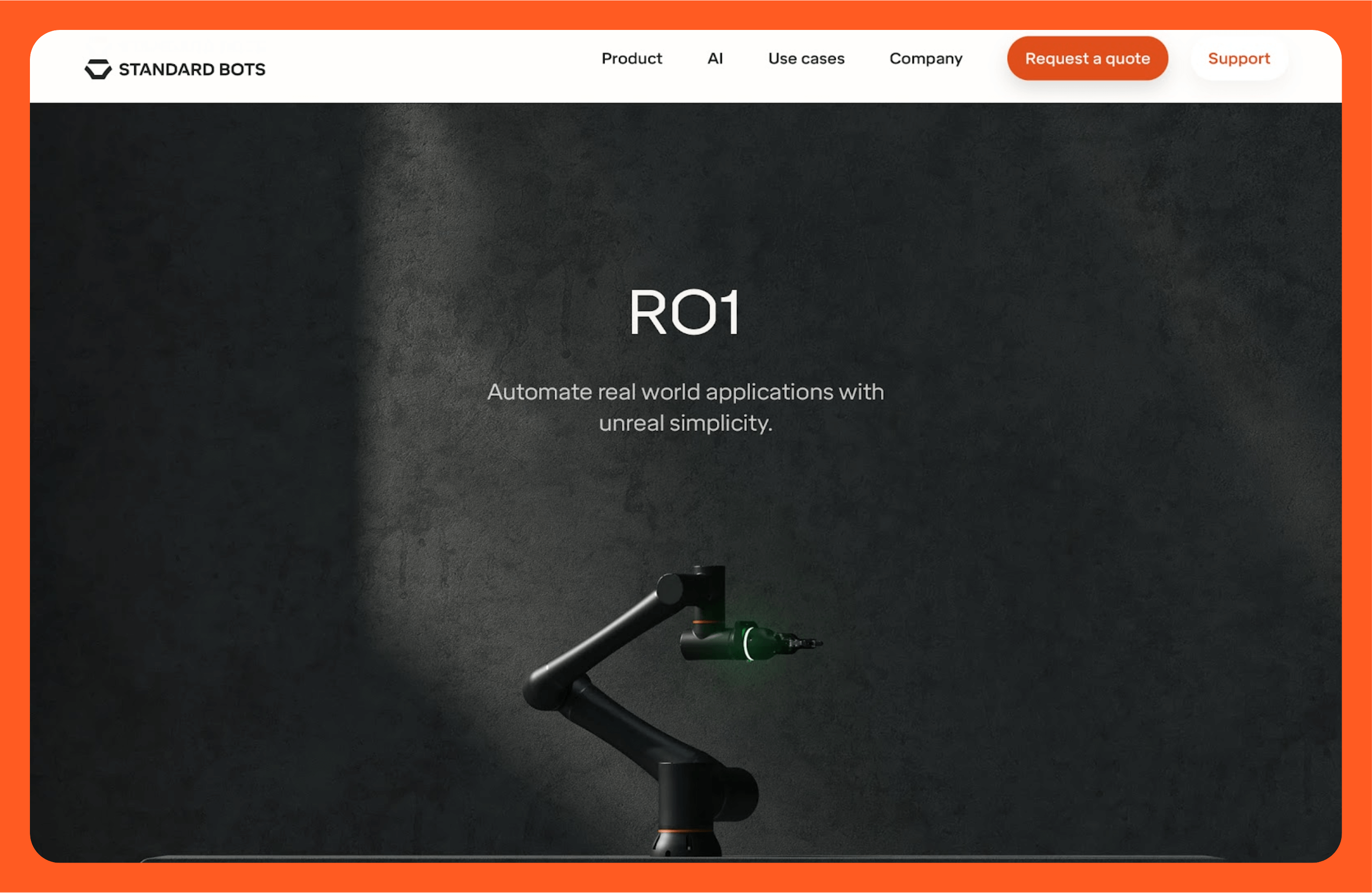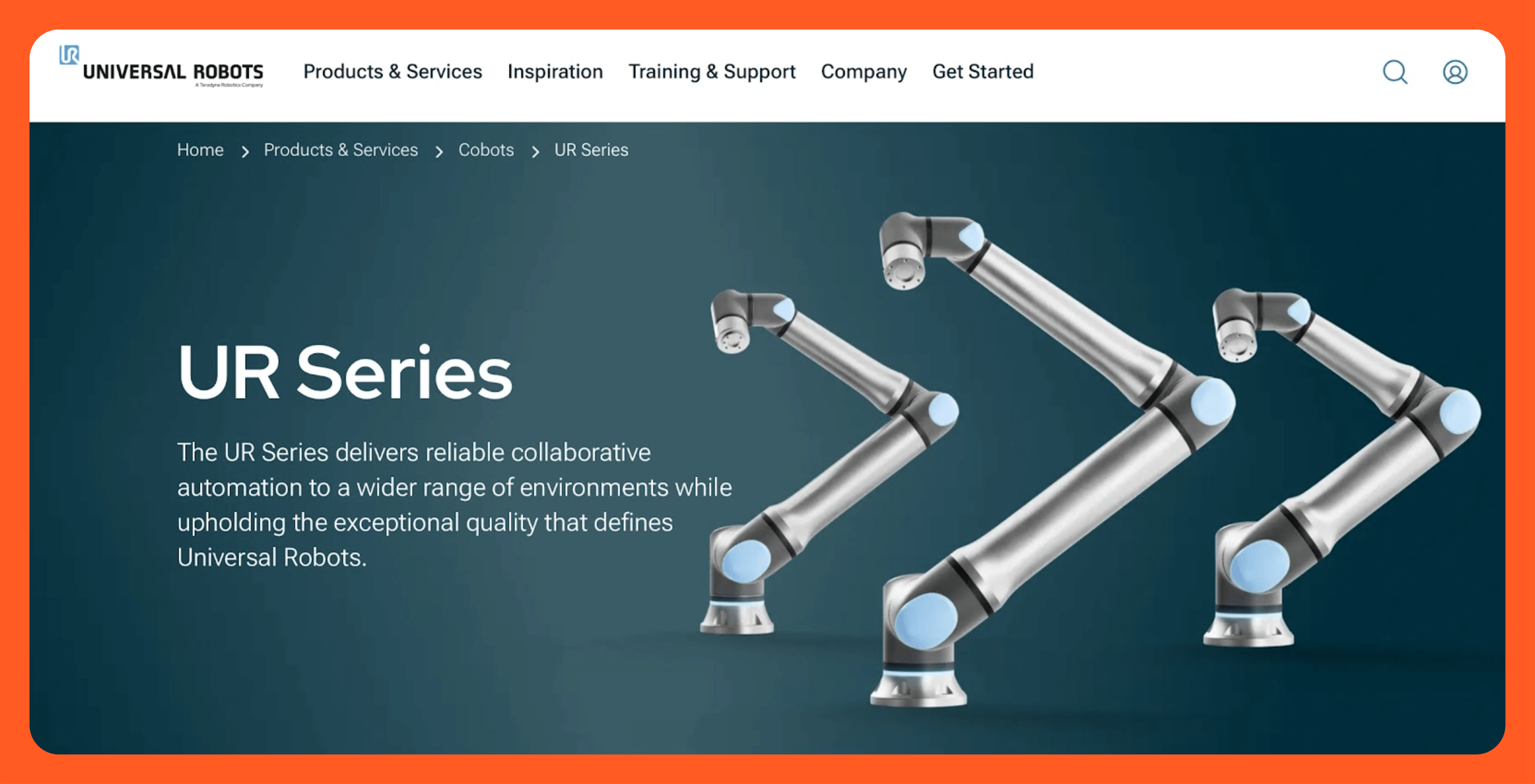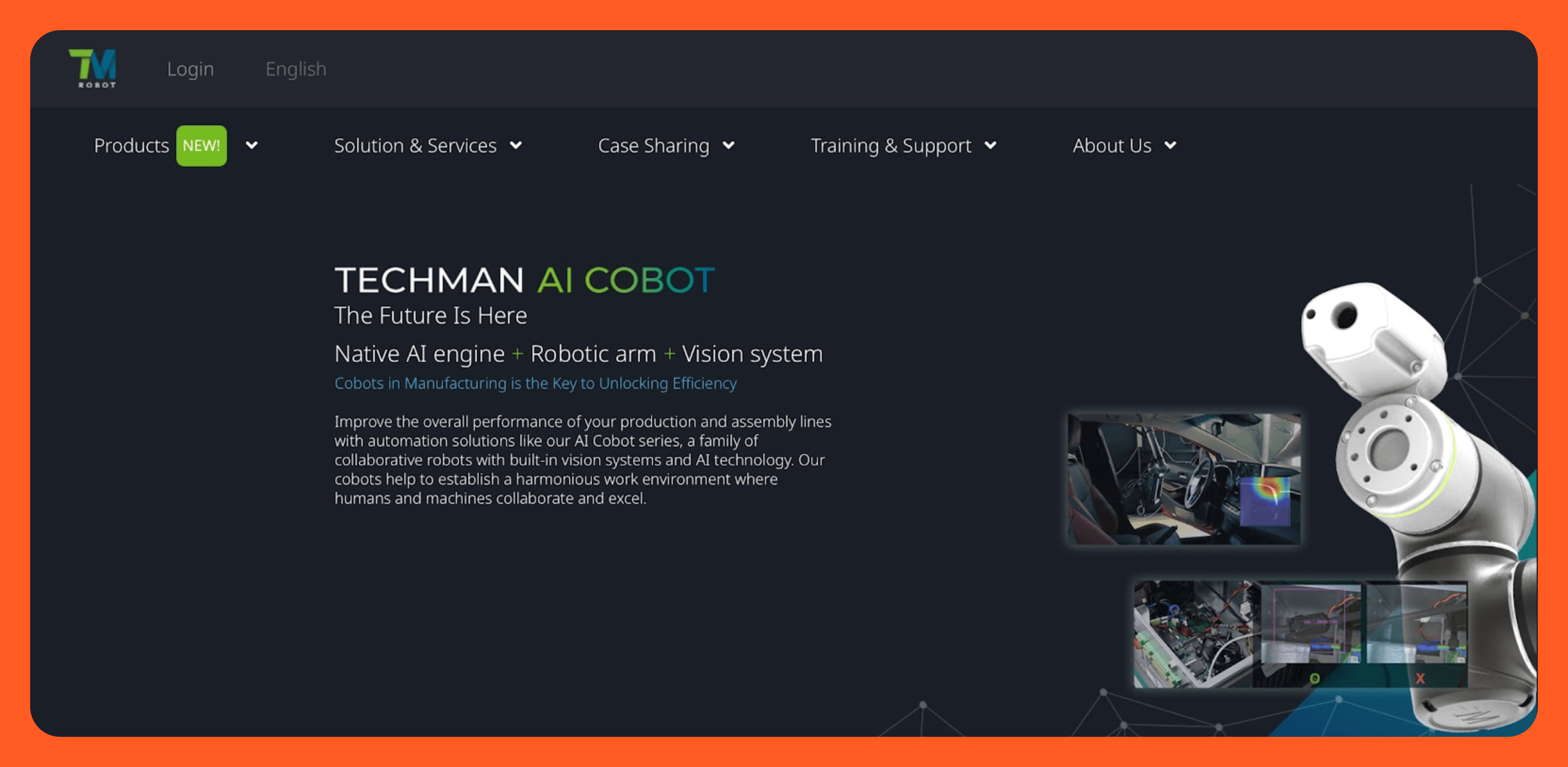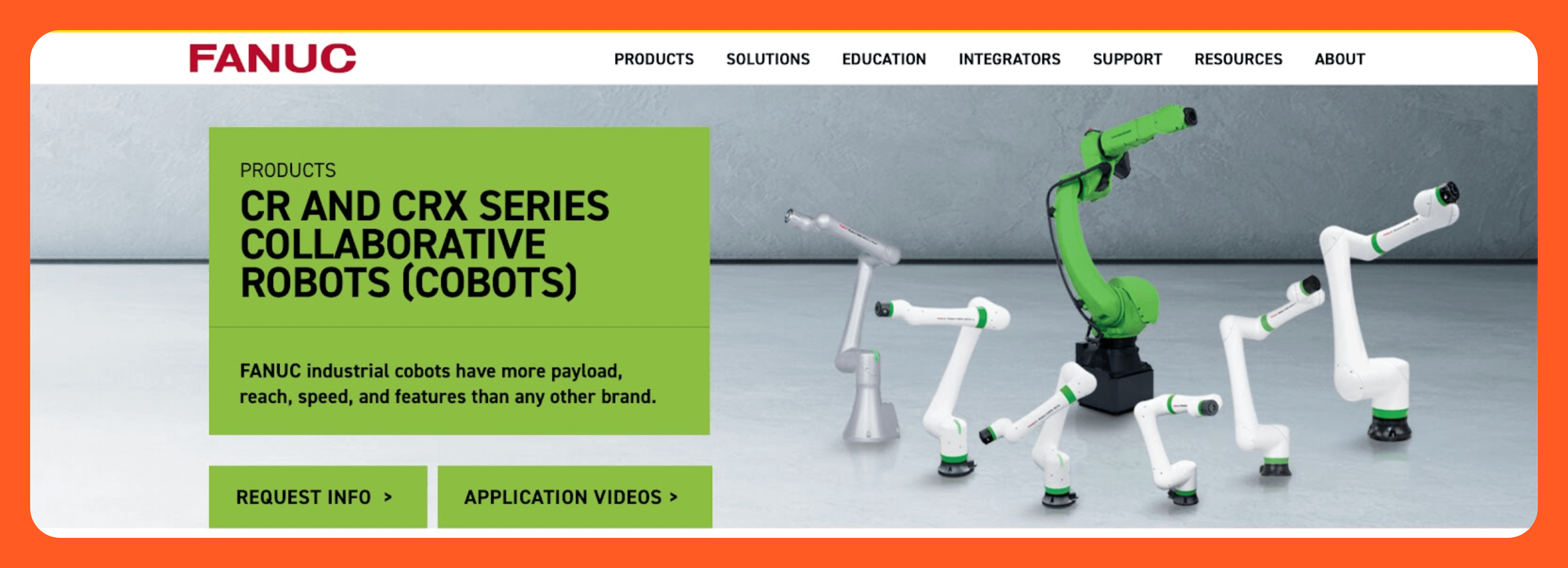By 2035, cobots are expected to account for over 25% of the overall robot market, as these systems become increasingly standard in sectors such as welding, palletizing, assembly, and spray painting. Pricing has become a critical factor for teams exploring automation as this market expansion accelerates.
This guide covers cobot pricing in 2025, from $25,000 starters to over $90,000 for advanced setups. Add-ons like tooling, vision, and integration can add between $5,000 and $30,000. Compare RO1, UR, ABB, Omron, and FANUC to budget accurately for purchase.
How much do cobots cost in 2025?
In 2025, cobot prices range from $25,000 to $60,000 for standard models. High-end configurations tailored for specific tasks like welding or spray painting can exceed $90,000, especially once you add software licenses, custom end-of-arm tooling, and integration costs.
So, how much does a cobot cost in total? It depends on what’s bundled.
Here’s what a typical purchase includes:
- Standard software license for motion control and task setup
- Base robotic arm with built-in safety features (usually 6-axis)
- Basic support documentation and possibly remote onboarding
- Programming interface (like a teach pendant or web-based tool)
Some vendors also offer starter kits that include grippers, sensors, and templates for common applications.
But don’t expect this price to cover everything. The full collaborative robot cost rises fast once you add cell integration, training, or country-specific compliance. That’s why it’s important to look beyond the base cobot cost and evaluate your full setup needs from day one.
Top factors affecting cobot prices
Top factors that affect cobot pricing include payload capacity, reach, number of axes, built-in safety features, included software, and the complexity of the intended use case.
Higher payloads, longer reach, advanced sensors, and specialized applications like welding or spray painting typically increase the total cost, especially when paired with premium software or compliance requirements.
Here’s what drives cobot costs up or down:
1. Payload and reach
Higher payload capacity (e.g., 15 to 18 kg) means stronger motors and a reinforced structure, which pushes the price up. Longer reach also demands more torque and stability. A compact cobot for light assembly will cost less than one designed to move heavy boxes or handle parts across a wide area.
2. Number of axes
More axes give the robot greater flexibility and control. A 6-axis cobot is standard in 2025, but if you’re working with simpler setups, a 4-axis model may reduce costs. The tradeoff here is a limited range of motion and fewer programming options.
3. Built-in safety and sensors
Safety features like force-limiting, vision systems, and collision detection are helpful and are sometimes required. The more intelligent and sensor-rich the cobot, the more expensive it gets. Still, these features often pay off in faster deployment and less downtime.
4. Included software
Some vendors bundle basic software at no extra charge. Others sell licenses or modules separately for motion planning, path optimization, or AI toolkits. Your total cobot pricing depends on how much control and customization you need.
5. Use case complexity
The application you’re targeting makes a big difference.
For example:
- Precision electronics: Need high repeatability and clean room compatibility
- Welding cobot price: Requires torch integration, path programming, and safety gear
- Spray painting setups: Must comply with ATEX standards and fluid delivery systems
- General pick-and-place: Often supported by cheap collaborative robot models under $30K
If you’re unsure what category your task falls into, you can ask real-world users directly in robot forums.
Cobot price list and comparison by brand
Standard Bots (RO1)

- List price: $37,000
- What makes it different? RO1 combines industrial-grade build quality with native ROS2 support, built-in simulation, and modular I/O. No vendor lock-in or recurring license costs.
- Use case fit: Great for machine tending, inspection, pick-and-place, and multi-step automation in lean production setups.
Universal Robots (UR)

- Starting price: ~$30,000 (UR3e) to ~$60,000+ (UR20)
- What makes it different? Universal Robots is one of the most widely adopted cobot brands. Their systems are known for intuitive programming, strong third-party ecosystem support, and fast deployment.
- Use case fit: Great for assembly, machine tending, and educational labs.
ABB

- Starting price: ~$40,000 for YuMi; dual-arm variants and custom packages may reach ~$75,000+
- What makes it different? ABB cobots are compact and precise, designed for environments like electronics and medical manufacturing. Dual-arm options provide human-like dexterity in small spaces.
- Use case fit: Ideal for intricate assembly, pharma, and high-precision tasks.
Techman Robot

- Starting price: ~$25,000 to $45,000, depending on payload and software bundle
- What makes it different? Techman cobots come with built-in vision systems, which reduces setup time for tasks like inspection and pick-and-place.
- Use case fit: Best suited for packaging, quality control, and logistics.
Omron

- Starting price: ~$30,000, with full packages climbing up to $60,000
- What makes it different? Omron cobots integrate smoothly with mobile robots (AGVs), creating modular automation systems for smart factories.
- Use case fit: Perfect for hybrid environments where flexibility and mobility are key.
FANUC

- Starting price: ~$35,000+ (CR series), up to $90,000+ for welding or painting setups
- What makes it different: FANUC cobots are built tough and designed for heavy-duty applications with high uptime. Many integrate directly with FANUC’s industrial control systems.
- Use case fit: Best for welding, palletizing, and harsh environments
Financing and ownership costs
Robot-as-a-Service (RaaS)
RaaS pricing is typically usage-based. You pay per hour or task. It’s a growing trend in environments with high variability or seasonal workloads. While not yet standard across all cobot brands, RaaS is gaining traction in logistics, medical packaging, and short-run production.
Bundled packages
Some suppliers offer turnkey cobot kits that include:
- The robotic arm
- On-site training
- Software libraries
- Installation and integration support
- End-of-arm tooling (like grippers or weld torches)
Although these bundles come at a premium, they often reduce time to deployment by weeks.
Hidden or ongoing costs to plan for
The base price of a cobot is only part of the equation. Long-term ownership includes several recurring costs that can impact your budget, especially once the robot is integrated into a live production environment.
Here’s what you should expect beyond the initial cobot pricing:
1. Annual maintenance
Routine maintenance usually costs 5–10% per year, depending on the robot’s workload, operating hours, and local service availability. This covers things like joint lubrication, sensor calibration, and minor part replacements.
2. Replacement parts and wear items
Most cobots are rated for 30,000 to 50,000 hours of use, but joints, belts, and grippers will wear down earlier depending on the task. These parts aren’t always covered under standard warranties. Replacements can run from a few hundred to a few thousand dollars.
3. Software updates and licensing
Some platforms offer free lifetime updates. Others charge for access to advanced motion planning, AI vision modules, or cloud dashboards. If you rely on proprietary tools, make sure to budget for ongoing license fees.
4. Training and operator certification
Basic operation is often intuitive, but for regulated industries or complex use cases, you’ll likely need certified training. This can cost $1,000 to $5,000, depending on region and training format (online vs. on-site).
5. Shipping and import duties
These vary widely by region:
- United States: Typically lower, especially for domestic vendors
- Europe: Add 20–25% VAT, plus CE compliance fees
- Asia: Duties can range from 5 to 15%, plus handling and regulatory costs
Shipping costs also spike for heavy payload cobots due to crating and freight charges.
6. Compliance and certification
In industries like automotive, food, or pharma, cobots may need additional certification or third-party compliance checks before deployment. These can add weeks to your timeline and a few thousand dollars to your invoice.
Understanding the full collaborative robot cost means accounting for these hidden items and not just the list price. Always ask vendors to clarify what’s included, what’s optional, and what’s required by your specific industry or geography.
Use case examples and ideal cobot buyers
Use case examples and ideal cobot buyers span from high-volume welding and palletizing operations to small workshops needing simple pick-and-place automation.
Larger manufacturers benefit from cobots in repetitive, precision-driven tasks, whereas smaller businesses use them to cut labor costs, improve consistency, and increase flexibility without large-scale automation investments.
Here’s how that plays out in real-world scenarios:
Welding
Welding cobots require arc-safe end-effectors, fume management, precise path programming, and welding torch integration. Add in safety protocols and power source syncing, and your total welding cobot price could hit $70,000 to $90,000 or more.
These setups are popular with mid-size fabricators looking to scale high-volume MIG or TIG operations without hiring additional welders.
Machine tending
CNC and injection molding lines often use cobots to load and unload parts. These setups typically require custom grippers, I/O syncing with machines, and protective enclosures.
Prices here range from $40,000 to $65,000 all-in, depending on part variability and cycle time requirements.
Palletizing
This is where reach and payload become critical. To stack heavy items on tall pallets, you’ll need a cobot with at least 12 to 15 kg payload and extended vertical reach, which usually means a $55,000+ system. Add conveyors and cell fencing if needed.
Spray painting
Spray applications require ATEX-rated equipment, sealed joints, and finely tuned motion control. The total price for a painting setup can exceed $80,000, depending on precision requirements and fluid system integration.
Small workshops or light-duty needs
Shops doing basic tasks like pick-and-place, testing, or packaging can get started with low-cost cobots in the $25,000 to $35,000 range.
If your motion needs are 2D and repeatable, even simpler systems like those covered in our Cartesian robot cost guide might be enough.
Whether you’re automating a niche process or rolling out across multiple lines, the key is matching complexity with capability and not overspending on features you won’t use.
Final thoughts: Choosing the right cobot for lasting value
Collaborative robot prices in 2025 range from around $25,000 for entry-level models to more than $90,000 for advanced, specialized systems. The total cost is shaped by factors like payload, reach, safety features, software, and integration requirements, with add-ons such as tooling or vision systems adding thousands more.
The right cobot delivers consistent performance, fits your application needs, and offers room to scale without unnecessary complexity. By weighing upfront and ongoing costs against productivity gains, businesses can select a cobot that provides strong ROI now and adapts to future demands.
Next steps with Standard Bots
Ready to automate with a cobot that works on your terms? Standard Bots’ RO1 delivers industrial-grade performance without the complexity or recurring license fees.
- Affordable and adaptable: RO1 costs $37K (list price). Get high-precision automation at half the cost of traditional robots.
- Precision and power: With a repeatability of ±0.025 mm and an 18 kg payload, RO1 handles even the most demanding CNC jobs.
- AI-driven simplicity: Equipped with AI capabilities on par with GPT-4, RO1 integrates seamlessly with CNC systems for advanced automation.
- Safety-first design: Machine vision and collision detection mean RO1 works safely alongside human operators.
Book your on-site demo with our engineers today and see how RO1 can bring AI-powered greatness to your shop floor.
FAQs
1. How much does it cost to maintain a cobot per year?
Most cobots cost between $1,000 and $2,000 per year to maintain. This includes preventive servicing, minor part replacements, sensor calibration, and occasional software updates. Costs may vary depending on usage hours and regional service rates.
2. Can I lease or finance a cobot instead of paying the full purchase price up front?
Yes, some cobot vendors offer leasing, financing, or Robot-as-a-Service (RaaS) plans. Monthly plans start around $1,000 to $3,000, while usage-based pricing is available for short-term or seasonal applications.
3. What is the typical lifespan of a cobot before major component replacement is needed?
Cobots generally last 6 to 10 years, depending on workload and environment. Major components like joints or drive units may require replacement after 30,000 to 50,000 operating hours.
4. Do cobot prices include safety certification and compliance costs?
Yes. Basic safety features are usually included in the base cobot price list, but certification costs (like CE, ISO 10218, or industry-specific compliance) may be billed separately, especially in pharma, automotive, or food production.
5. Are there government incentives or tax credits that can lower the net cost of a cobot?
Yes. In the U.S., government incentives include Section 179 tax deductions for automation equipment. The EU and parts of Asia offer grants or subsidies for robotics under digital transformation or smart factory programs. Incentives can reduce your net cobot cost significantly.
6. How do shipping fees and import duties affect cobot pricing outside the United States?
Outside the United States, shipping fees and import duties can add 10–30% more on top of the base price. In Europe, this often includes VAT and CE compliance charges. In Asia, costs like port handling, customs clearance, and local taxes can push prices up even further.
7. What is a cobot?
A cobot, short for collaborative robot, is a robot designed to work alongside humans in a shared workspace. Unlike traditional industrial robots that are often isolated, cobots are built with safety features to enable direct interaction with people, enhancing human capabilities safely and efficiently.
brighter future
Join thousands of creators
receiving our weekly articles.







.png)


